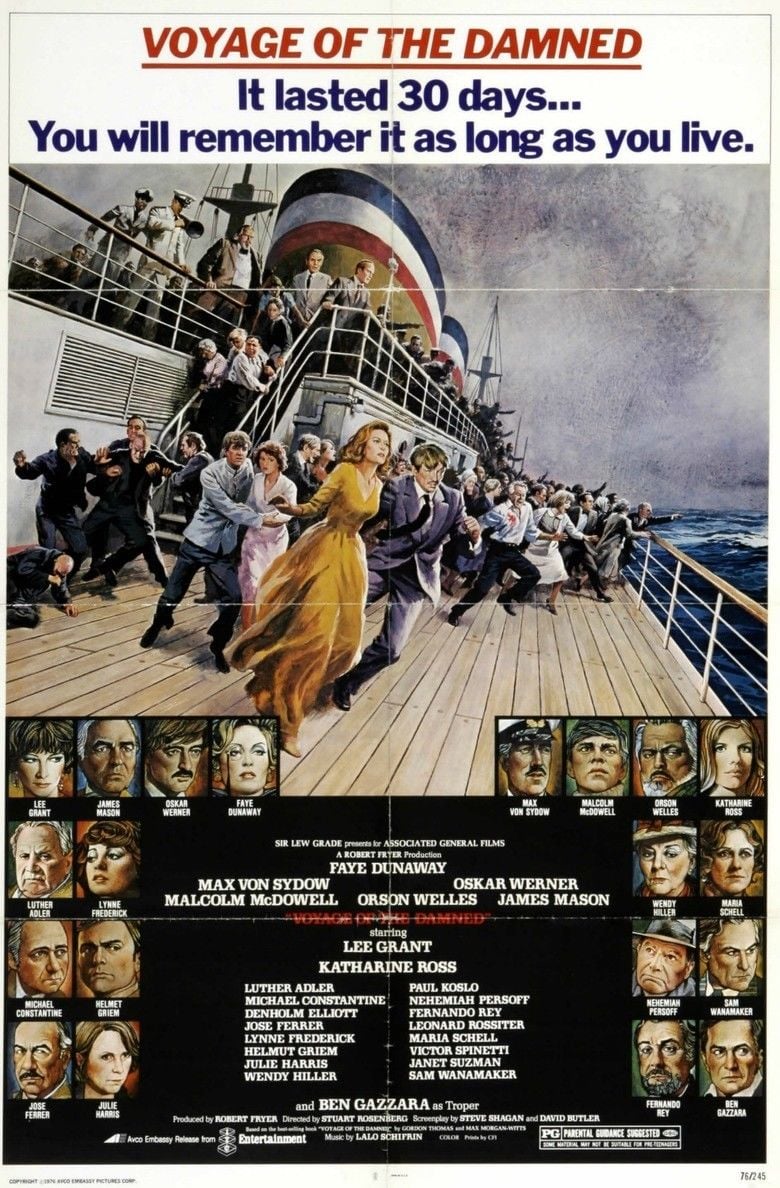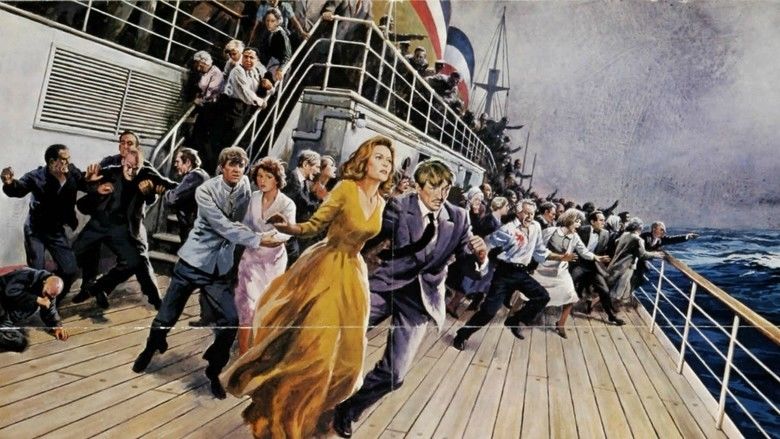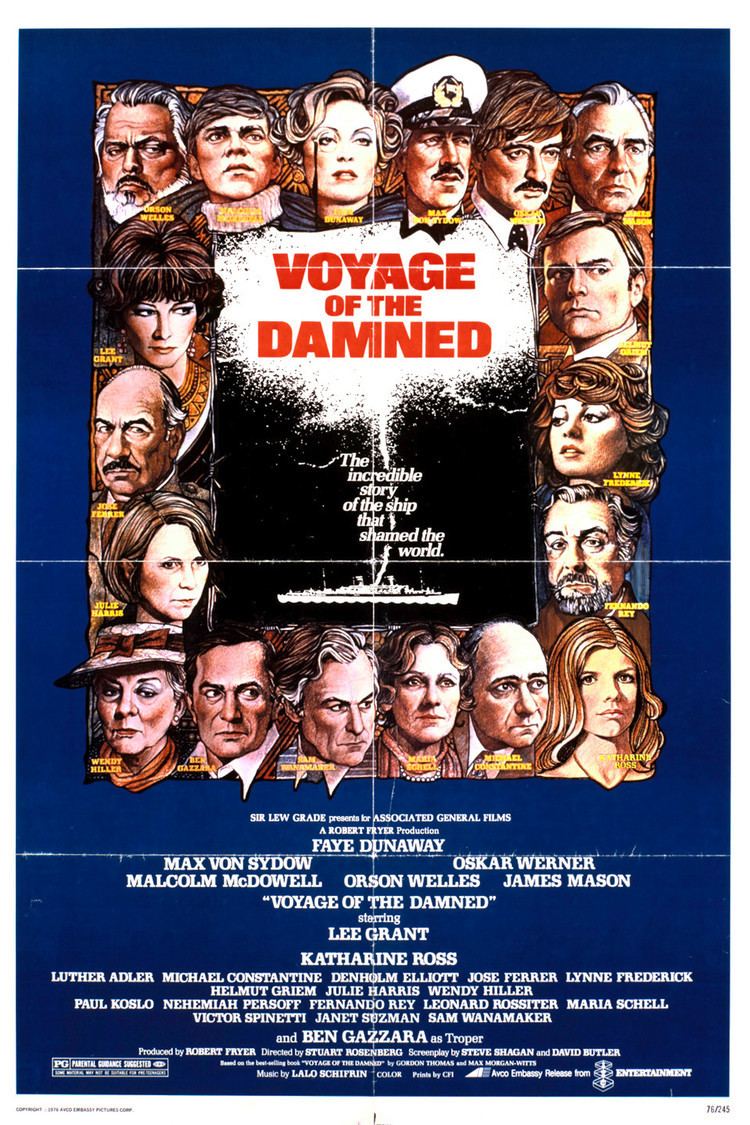Voyage of the Damned
6.6 /10 1 Votes
Initial DVD release January 4, 2000 Duration Country United Kingdom | 6.6/10 IMDb Genre Drama, War Language English | |||||||||||||||||||||||||||||||||
 | ||||||||||||||||||||||||||||||||||
Release date 22 December 1976 (1976-12-22) Cast (Captain Schroeder), (Denise Kreisler), (Professor Egon Kreisler), (Lili Rosen), (Carl Rosen), (Max Gunter) Similar movies Sinking of the Lusitania , Deadly Honeymoon , Dangerous Crossing , Deep Water , Sanam Tere Hain Hum , Darker Than Amber Tagline It lasted 30 days...You will remember it as long as you live. | ||||||||||||||||||||||||||||||||||
Voyage of the damned trailer
Voyage of the Damned is a 1976 drama film, which was based on a 1974 book written by Gordon Thomas and Max Morgan-Witts with the same title.
Contents
- Voyage of the damned trailer
- Voyage of the damned 1976
- Plot
- Director and crew
- Production
- Actual death toll
- Reception
- Alternate version
- Awards
- Soundtrack
- Track listing
- Personnel
- References

The story was inspired by true events concerning the fate of the MS St. Louis ocean liner carrying Jewish refugees from Germany to Cuba in 1939.

Voyage of the damned 1976
Plot
Based on historic events, this dramatic film concerns the 1939 voyage of the MS St. Louis, which departed from Hamburg carrying 937 Jews from Germany, ostensibly bound for Havana, Cuba. The passengers, having seen and suffered rising anti-Semitism in Germany, realised this might be their only chance to escape. The film details the emotional journey of the passengers, who gradually become aware that their passage was planned as an exercise in propaganda, and that it had never been intended that they disembark in Cuba. Rather, they were to be set up as pariahs, to set an example before the world. As a Nazi official states in the film, when the whole world has refused to accept the Jews as refugees, no country can blame Germany for their fate.
The Cuban government refuses entry to the passengers, and the liner heads to the United States. As it waits off the Florida coast, the passengers learn that the United States also has rejected them, leaving the captain no choice but to return to Europe. The captain tells a confidante that he has received a letter signed by 200 passengers saying they will join hands and jump into the sea rather than return to Germany. He states his intention to run the liner aground on a reef off the southern coast of England, to allow the passengers to be rescued and reach safety there.
Shortly before the film's end, it is revealed that the governments of Belgium, France, the Netherlands, and the United Kingdom have each agreed to accept a share of the passengers as refugees. As they cheer and clap at the news, footnotes disclose the fates of some of the main characters, suggesting that more than 600 of the 937 passengers, who did not resettle in the United Kingdom but in the other European nations, ultimately were deported and died in Nazi concentration camps.
Director and crew
The 1976 film was directed by Stuart Rosenberg, with a screenplay by David Butler and Steve Shagan. It was produced by ITC Entertainment and released by Avco Embassy Pictures.
Production
The movie was filmed on board the chartered Italian ocean liner Irpinia, which was fitted with two false funnels in order to resemble the St. Louis. It was also shot on location in Barcelona, Spain, St. Pancras Chambers in London, and at the EMI Elstree Studios in Borehamwood, Hertfordshire.
Actual death toll
The true death toll is unclear. The book of these events estimates a much lower number of deaths. By using the survival rates for Jews in various countries, Thomas and Morgan-Witts estimated 180 of the St. Louis refugees in France, 152 of those in Belgium, and 60 of those in the Netherlands would have survived the Holocaust. Adding to these the passengers who disembarked in England, they estimated that of the original 936 refugees (one man died during the voyage), roughly 709 survived and 227 were slain. (See the relevant article.) In 1998, Scott Miller and Sarah Ogilvie of the United States Holocaust Memorial Museum traced the survivors from the voyage. They concluded that a total of 254 refugees died at the hands of the Nazis.
Reception
According to Lew Grade who helped finance the film, the movie "should have done better" at the box office.
Alternate version
The complete, uncut version of the film was 182 minutes long. It was released only once, on the Magnetic Video label in 1980.
Awards
The film was nominated for three Academy Awards:
It was nominated for six Golden Globe Awards, winning one:
It was nominated in the categories of:
Soundtrack
The film score was composed, arranged and conducted by Lalo Schifrin and the soundtrack album was released on the Entr'Acte label in 1977.http:="" dougpayne.com="" lsd76_85.htm#voyage%20of%20the<="" ref="">
Track listing
All tracks written by Lalo Schifrin.
Personnel
References
Voyage of the Damned WikipediaVoyage of the Damned IMDb Voyage of the Damned themoviedb.org
